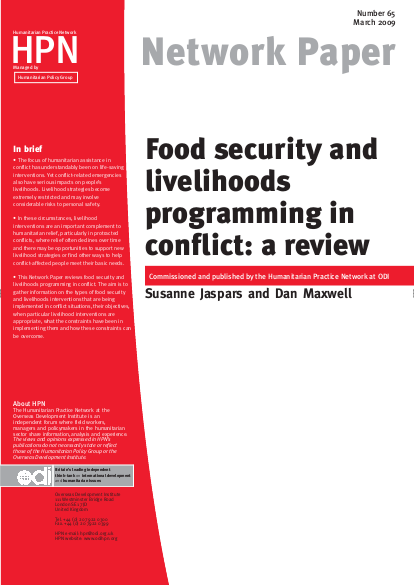A Review

The paper starts with an overview of contemporary conflict and the impact of conflict on livelihoods (Chapter 2), followed by a discussion of the objectives of livelihoods programming in conflict and possible livelihoods interventions to meet these objectives (Chapter 3). The livelihoods framework, as adapted for humanitarian contexts by Tufts University, is used as the basis for analysing the impact of conflict on livelihoods, and for reviewing different types of food-security and livelihoods interventions, using information gathered in the case studies as well as some information from other conflict areas, where relevant. Whereas Chapter 3 discusses the types of interventions that have been implemented in different phases or types of conflict, Chapter 4 reviews ways of making livelihoods programmes conflict-sensitive, by designing and implementing interventions which ensure that risks are minimised and positive impacts maximised. This discussion refers in particular to benefits–harms tools and humanitarian principles. Finally, the report draws conclusions about the range of livelihoods interventions that have been, or could be, implemented in situations of conflict, and what more could be done to effectively analyse and support livelihoods in conflict.